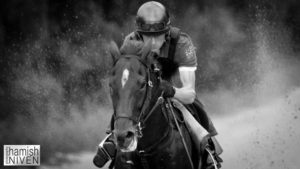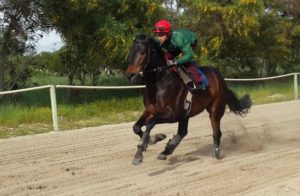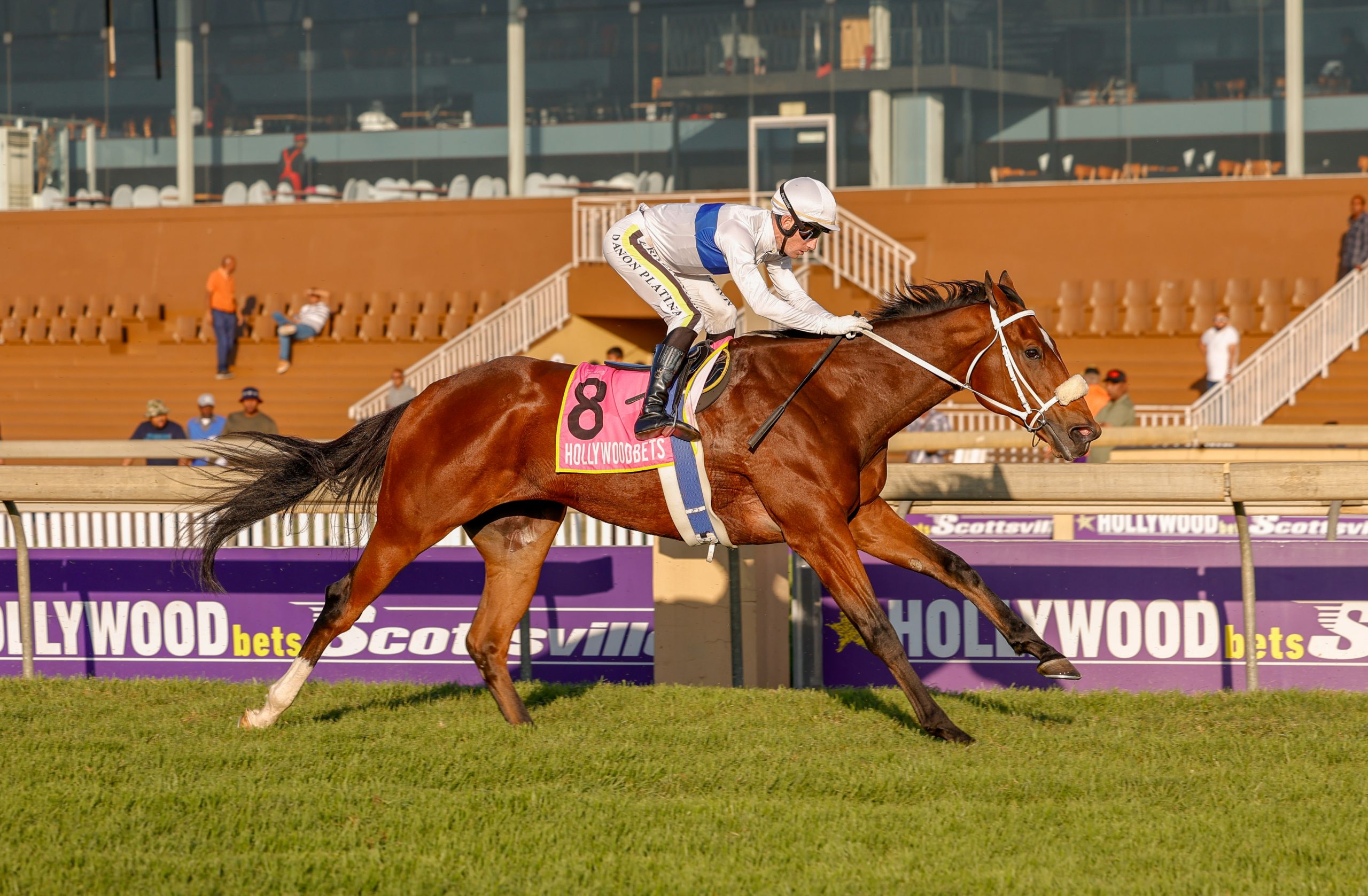 There’s a John Betjeman poem called False Security. It’s about a little boy going to a children’s birthday party. The boy is nervous about having to walk past a scary house, supposedly haunted by a ghost. He makes it past the house and, triumphant, has a lovely time at the party, only to be broadsided on departure by a cruel, thoughtless comment by his hostess’s mother – “I wonder where Julia found that strange, rather common little boy?”
There’s a John Betjeman poem called False Security. It’s about a little boy going to a children’s birthday party. The boy is nervous about having to walk past a scary house, supposedly haunted by a ghost. He makes it past the house and, triumphant, has a lovely time at the party, only to be broadsided on departure by a cruel, thoughtless comment by his hostess’s mother – “I wonder where Julia found that strange, rather common little boy?”Many (many) years ago, I rode in an amateur race at Kenilworth. I thought I was adequately prepared – I’d done lots of prep work, we’d passed our pens certificate with flying colours and I ascribed my normally kind and steady horse’s sudden flightiness to the violent strain of South-easter that seems exclusively reserved for Milnerton. The night before the race, I packed and re-packed my bag to make sure I hadn’t missed anything. My kit was clean, my boots were polished and my breeches were so white they hurt the eye. I even remembered the extra lead I needed to make the weight (oh happy days!). Almost as an afterthought, I packed a vial of Rescue Remedy in case my horse got upset having to travel on his own. Bizarrely, while I fretted about a million things, the one thing I didn’t worry about was my horse. We were pretty tight and with that wonderful confidence of youth and female logic I was sure that no matter what happened, I could count on him to look after me. I had factored without the demon that apparently lurked in our horsebox and decided to possess him during the drive to the race course!
My dad, who’d spent the day chain smoking, looked in danger of going up in smoke altogether as we headed to the saddling box. How we got the saddle on I still don’t know and it took two grooms to lead us round the parade ring and keep us from taking off like a helium balloon and disappearing into the ether. Reaching for the Rescue Remedy, I ignored the dosage instructions and necked the lot.
The point is that sometimes danger lurks in unexpected places. Of course, sometimes it does not, and in such cases, it’s really unforgiveable that we should bury our heads in the sand and hope for the best.
Inherent Danger
Horses, as the old expression goes, are dangerous at both ends and uncomfortable in the middle. Throw a whole bunch of them together in a high pressured, electric environment and you can dial the danger factor up to ‘are you crazy?’ I was fretting over one of my horses one day when my exasperated trainer finally exploded: ‘It’s just a maiden race, not the bloody Grand National you know!’ He was right, it was ‘just a maiden’, but the problem is that racing doesn’t occasionally just lapse into ‘are you crazy’ territory – that’s where we do business. And every time we get onto, or even near a horse, we risk potential injury. Horse riding is one of the most dangerous sporting activities bar none. Statistics reflect that every rider can expect a serious injury for approximately every 350 hours of riding, which means that as the old horsemen say, it’s not a question of if you’re going to get hurt, it’s simply a question of when and how bad it will be.
As I wrote in these very pages not too long ago, one hopes for the best, but you plan for the worst. If danger and injury are a given – and it’s blindingly obvious that they are – then it stands to reason that racing should take every possible precaution and be prepared for any and every eventuality on a race day. If one compares the number of medics and first aid staff on stand by at any given rugby game to the numbers we have on race days, it’s patently clear that racing falls very short.
Do the basics
Let’s look at a few basics needed to get through an average race day: A serviceable track, working starting stalls, hose pipes on a hot day, (out in plain sight and extra points if it’s connected to a tap); the dreaded green screen, a firearm or other means of attending to a horse that needs to be euthanized and people who are qualified to perform the deed if necessary. Working radios and communication equipment (checked regularly and batteries changed), the emergency vehicles (fueled up, if you please), trained medics, fire extinguishers and correctly stocked first aid boxes. Is anyone else feeling a little uncomfortable?
Jockeys have all sorts of rules and regulations about their equipment, the specs on their safety vests and interestingly, the NHA has just implemented rule changes requiring jockeys to have a minimum of R1 million life assurance and disability cover. We do random drug and urine tests and we take specimens from our runners and riders to ensure that they’re all operating at full capacity. But what about the guys running the show? Who checks up on them? Because I don’t see any NHA rules as far as they’re concerned. Mind you, we know how our regulators feel about rules!
It would be interesting to find out whether our tracks carry any public liability insurance and what their minimum responsibilities are in terms of safety for rider, horse and groom (yes, they’re on course too). I wouldn’t like to bet money on whether grooms are ever shown around the facilities and told where to go and what to do in case of an emergency and these are the guys who spend most of their time dealing with the horses and therefore most at risk. Even office workers have regular fire drills to make sure everyone knows the basics of not using the lifts, which exits to use and where to assemble. It would be interesting to find out whether there are safety drills at the race course. No, nevermind, don’t answer that.
This is the sort of stuff that used to fall under ‘common sense’, but unfortunately one can’t take common sense for granted these days, so we’ve had to turn it into a job description and name it ‘Health and Safety’ (or as my husband likes to term the South African version, ‘health or safety’). However, it seems that even that isn’t enough.
Race day processes and procedures are something we are remarkably relaxed about, given that we make a living hurtling groups of highly strung horses around man made tracks at a hundred miles an hour. Most folks are hard pressed to find their way onto the course, nevermind where to find help in an emergency.
The safety access road (good luck trying to get a vehicle onto the Kenilworth track in a hurry), a serviceable vehicle, a correctly equipped first aid box, a trained paramedic, a list of emergency contact numbers – these are the boring, unsexy minutiae vital to getting us safely through a race day. We’re supposed to take care of those things first, not as an afterthought once we’ve decided what to serve for lunch. Somehow we seem to get these things back to front.
Priorities
In a very short space of time, we’ve had the most ridiculous polytrack design implemented at Greyville with a tar road right next to the track, no safety ditch and concrete pillars at regular intervals along the far side of the tarred road. In June last year, Richard Fourie suffered a nasty fall on Jet Explorer in the Gold Challenge. While much was made of Jet Explorer’s horrific injuries (and rightly so), other than missing Richard in some of the KZN winter features, very little was said about his injury. I like horses as much as the next bunny hugger, but it’s an upside down world where an injured horse generates more concern than his fallen jockey – someone’s son, husband and father.
One wonders quite what it will take to get someone to sit up and pay attention? If recent events are anything to go by, that turns out to be S’manga Khumalo lying out on the Turffontein track on International day and Jarred Samuel being in hospital in an induced coma. Really guys? We need to risk two lives before we review our policies?
After the Smanga incident, we asked whether there were two ambulances on course. The answer should have been available immediately – safety procedures should be a given, not the subject of an inventory check. Instead we were put in a holding pattern of ‘we’re launching an enquiry.’ There is a man lying in hospital in a coma after a series of bungles that Fawlty Towers would be proud of and again, we’re ‘having an enquiry’.
I’d wager that if it hadn’t been for these events happening so close together, there probably wouldn’t be a fuss at all. If it requires two high profile falls to ‘launch an enquiry’, the odds of getting someone to be proactive and take action BEFORE we have a mishap seem staggering. Does there really need to be blood on the grass before we realise that there are real lives at stake here?
Folks, this isn’t a hobby. These are our day jobs – the fact that we’re having to discuss this is frankly terrifying.
If you have to die, do it at the airport
 Did you know that the best place to have a heart attack (other than a hospital of course) is an airport, because they usually keep a defibrillator on site. Interestingly, other places that also usually have them are shopping malls and surprise surprise, casinos. Considering the volume of people passing through these facilities on a daily basis, it’s inevitable that at some point someone is going to need one and therefore they take the necessary precautions.
Did you know that the best place to have a heart attack (other than a hospital of course) is an airport, because they usually keep a defibrillator on site. Interestingly, other places that also usually have them are shopping malls and surprise surprise, casinos. Considering the volume of people passing through these facilities on a daily basis, it’s inevitable that at some point someone is going to need one and therefore they take the necessary precautions.
Given the volume of horses we deal with and the dangers involved, the racecourse should be so well prepared and versed in safety procedures that it should be one of the BEST places to have an accident, not the worst.
And while the spotlight is uncomfortably focused on our race tracks at the moment, it’s worth sparing a thought for our training facilities. A racecourse usually has around 100 horses on site on any given race day. Training centres have many times that number and far more horses sharing the track at the same time, plus jockeys, grooms, trainers, assistants and the odd owner and visitor. Where are the safety, medical and veterinary facilities? (answers on a post card). Some yards still don’t have workmen’s compensation for their grooms!
 Our jockeys get a lot of stick, but there are not many people who start their day at 4am, forced out into the elements come rain, sleet or shine to face living, breathing, unpredictable creatures 10 times their body weight, at speeds of up to 60 km per hour. Not many who have the supreme discipline to survive the physical hardships and deprivations of the gym and sweat box, pushing their bodies to the limits of their endurance to sweat off that one last ounce for the privilege of sitting on a half ton of revved up horse power. Few with the nerves to withstand the continuous series of high pressured, high velocity, split second decisions, under the tightest scrutiny and with thousands of rands riding on every move; who can go from hero to zero and back again in the space of an afternoon. There are not many professionals that are followed by an ambulance every time they go to work, but those that do, are called jockeys.
Our jockeys get a lot of stick, but there are not many people who start their day at 4am, forced out into the elements come rain, sleet or shine to face living, breathing, unpredictable creatures 10 times their body weight, at speeds of up to 60 km per hour. Not many who have the supreme discipline to survive the physical hardships and deprivations of the gym and sweat box, pushing their bodies to the limits of their endurance to sweat off that one last ounce for the privilege of sitting on a half ton of revved up horse power. Few with the nerves to withstand the continuous series of high pressured, high velocity, split second decisions, under the tightest scrutiny and with thousands of rands riding on every move; who can go from hero to zero and back again in the space of an afternoon. There are not many professionals that are followed by an ambulance every time they go to work, but those that do, are called jockeys.
With million rand owners, horses and race days, and thousands of rands riding on them in every race, our jockeys have about a hundred things to worry about on race day – safety procedures should not be one of them.












